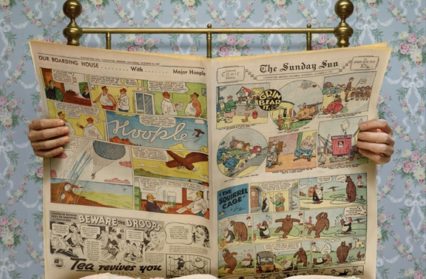Grace Patrick visits the She Sees The Shadows exhibition, a collaborative piece between MOSTYN and the David Roberts Art Foundation.
Built from the work of more than forty contemporary artists, She Sees The Shadows celebrates the often overlooked elements of daily life. As a collaborative piece between MOSTYN the David Roberts Art Foundation, with works from the David Roberts Collection, this exhibition presents a slice of some of the best recent work available. This exhibition was inspired by Space and Sight, a book written in 1932 by Marius von Senden containing accounts of the experiences of people who gain sight for the first time later in life. There is an obvious overlap between gaining the power of sight, and choosing to use our existing sight differently, and it is the concept of this choice that really underpins She Sees The Shadows.
More specifically, the title directly refers to the case of a young French woman who gained the ability to see in 1886. The medical notes by her doctors recount the strange, alien beauty that the world then held for her when she had been able to see little more than ‘shadows’ throughout her life. This exhibition plays heavily on the idea of alienating us as an audience from what we have come to simply accept and therefore barely see. By inlaying the handle and bristles of a broom with mother of pearl, which catches the light only after a few moments’ observation, or pressing a dirty, wet mop onto a piece of A1 sketch paper and framing it, we have no option but to accept that art can be found and made out of the most ordinary and therefore unexpected things. Through this sense of alienation, there is something of a consequential shift of power. Fourteen identical notebooks, framed so that only the covers are visible but with the description promising that their other side contains sketches is a frustrating reminder that we are not always in control: it is offered to us only in the hypothetical, and that is therefore how we have to experience it.
Many of the pieces that make up She Sees The Shadows are built around the question of how and why we can or should confer artistic beauty to the profoundly mundane. Questioning what is necessary for art to be art is an age old conversation, but one that hasn’t yielded any certain answers as of yet. Additionally, it’s undeniable that it still intrigues us as a society and as humans, and so we continue to ask and explore. She Sees The Shadows taps into this curiosity and encapsulates it perfectly.
More than creating something necessarily entirely new, the art in this exhibition focuses on the art is already here – the stillness of an untouched puddle on a pavement, or the pristine concrete slab that will soon be the foundation of a house. Essentially, why reinvent the wheel? By building upon elements of the real world, the viewer is reminded that, despite the setting, art needn’t just exist behind glass and in galleries.
That said, the Mostyn gallery could not be a better setting for this collection. With its high, arching walls and roof made primarily of skylights there is a real sense that the line between the gallery and the outside world is blurred. This isn’t an in insular, self applauding space, it is engaging actively with the community that it exists within. With a room of this exhibition dedicated solely to the work of local school children and another filled with (relatively) affordable pieces where the display evolves with each one sold and replaced, it is obvious that a real effort is being made to shift into a more community oriented mindset.
It’s hard to shake the sense that this idea of finding beauty in the often ignored is true to the environment in a different way. Through investment and belief and hard work, the picture of North Wales outside the gallery walls is changing. People are choosing to see potential and beauty in this region again, and are nurturing it through their time and money. This is what the conversations raising by this exhibition mean in real life: it’s not just about whether or not reclaimed materials and recreated objects can be art, it’s about where we choose to put our trust, and what we choose to believe in. The renaissance of hitherto redundant objects inside the gallery is inseparable from the rejuvenation of the world outside, and that’s what gives this exhibition its significance and quiet, melancholy joy.
She Sees the Shadows is on at Oriel Mostyn in Llandudno until November 4th.
Grace Patrick is an avid contributor to Wales Arts Review.












